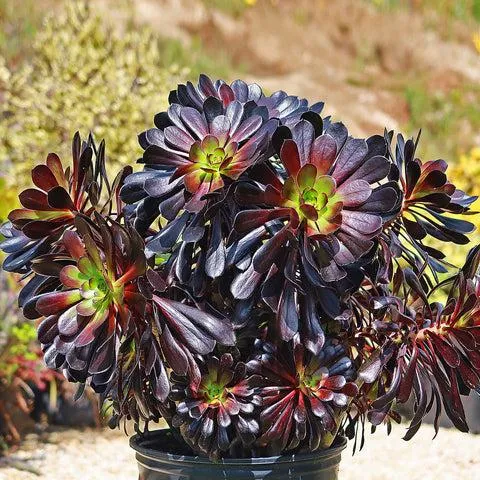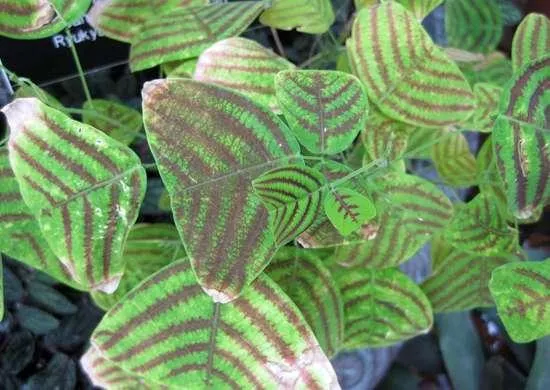Your Guide to Collecting Rare and Unusual Hanging Plants
Are you looking to spice up your home or office with some truly unique hanging plants? As any avid plant collector knows, there’s nothing quite like discovering rare varieties that few other green thumbs have in their collection. While common pothos and philodendrons are gorgeous in their own right, treating yourself to an oddity from time to time really make your space feel extra special. In this article, I’ll share all the info you need to start seeking out some seriously unusual hangers to call your own.
What Makes a Hanging Plant “Rare”?
When it comes to defining rarity in the plant world, availability and ease of cultivation are really what set most oddities apart from commonly found varieties. A hanging plant that’s difficult to source or propagate would generally be considered rare. Some key factors that qualify a hanger as unusual include:
- It’s native to an obscure or isolated region, limiting natural distribution.
- It has specialized growing requirements that are challenging for the average gardener.
- Only a small number of nurseries carry it internationally or it’s only seasonally available.
- It hasn’t yet been widely propagated for the houseplant market.
Of course, rarity is sort of subjective – what’s obscure now may become trendy tomorrow as plant fanatics spread the word. But in general, these characteristics help identify plants that will really make your collection stand out.
Top Picks for Rare Hanging Plants
Now that we’ve got a basic idea of what qualifies as an unusual hanger, here are some top recommendations to start your rare plant adventure:
- String of Bananas (Curio radicans): With its long vines of bubbly banana-shaped leaves, this African native is super photogenic for hanging baskets or poles. Difficult to source but well worth the effort to track down.
- Leather Plant (Curio rawlinsonii): As the name suggests, the pebbly textured leaves resemble leather more than foliage. Prefers terrarium conditions, making it quite the challenge indoors.
- String of Turtles (Peperomia prostrata): Forms compact vines dotted with tiny flattened round leaves resembling tortoise shells. Best in bright filtered light – seems to be gaining popularity fast these past couple years.
Those are just a few top exotic picks that will turn heads. With a little patience and research, you’re sure to discover many more rare beauties perfect for hanging gardens.
Tips for Tracking Down Elusive Plants
Sourcing less common plants can require some savvy searching. Here are my tried-and-true techniques for connecting with rare beauties:
- Follow specialty plant nurseries on social media. They sometimes post about new and hard-to-find arrivals.
- Join local plant swap groups. Rare plant collectors love to trade cuttings of their oddball finds.
- Check auction sites, like eBay. Weird imported plants sometimes end up there after making their way stateside.
- Waitlist yourself forrestock notifications onrareretailers’ websites. Be ready toactfastwhenalerted.
- Ask plant-obsessed friends to keep an eye out while traveling – you never know what they may stumble upon!
With some hunting, word-of-mouth and serendipity and these tips, your odds of scoring treasures greatly increase. Patience is key when seeking out elusive beauties.

Special Care Tips for Finicky Hangers
While the thrill of ownership is part of the fun of rare plants, many oddballs do require some extra TLC due to specialized needs. Here are some general guidelines I’ve picked up over the years:
- Research native conditions – mimicking a plant’s natural habitat is crucial for survival. Things like soil mix, light levels and moisture are often very specific.
- Consider a terrarium or closed environment for fussiertypes accustomed to high humidity. Glass tanks are ideal mini greenhouses.
- Be diligent about identifying and treating any pests early. Stressed exotic plants are prime targets for infestations.
- Patience is key when acclimating or if growth seems slow. These aren’t your average pothos! Go at their pace.
- Be prepared for quirks or odd growth habits unique to rare varieties.
With the right tailored care, temperamental plants can thrive just as happily as any other. Research is so worth it for the thrill of success with rarities.
Top Hanging Containers for Rare Finds
Now that we’ve covered finding and caring for special varieties, let’s explore some of the coolest ways to show them off:
- Macrame hangers – vintage style is in and these make such a statement.
- Hanging planters with multiple pockets – great for grouping several rarities together.
- Succulent balls – air plants swoon inside spherical wire frames.
- Rope or wire hanging baskets – classics that never go out of style.
- Terracotta or wood hanging pots – perfect for trailing or trailing rarities with an earthy boho vibe.
You can also get creative diying solutions from items like wood slices, metal grids or dangling glass orbs. The options are endless for display!
Frequently Asked Questions
As you start your rare plant adventure, here are answers to some common questions I’ve been asked:
Q: How do I tell if a plant is truly rare or just unusual/uncommon?
As we discussed at the start, availability, habitat and difficulty level are good indicators of genuine rarity. Consult credible references like thorough plant encyclopedias or expert nurseries for verification.

Q: I’m new to plants, are rare varieties too difficult for a beginner?
With care and research to understand specific needs, any dedicated gardener can thrive with finicky finds. Start with hardier and forgiving exotic options to build skills before tackling real divas. You’ve got this!
Q: Is it legal/ethical to purchase endangered or illegally wild-collected plants?
Stick only to nursery-propagated varieties to avoid any charges or support of harmful practices. Sustainability should come before impulse with sensitive species. Better safe than sorry!
Q: What’s a good starter budget for collecting unusual hangers?
Expect to invest anywhere from $10-50 per plant depending on rarity. As with any hobby, costs add up over time but small regular purchases are sustainable. Quality over quantity is key.
I hope these tips have you eager to start exploring the weird and wonderful plant world above your head! Feel free to message me directly if any other questions arise in your collecting journey. Happy hanging!

Rare Hanging Plants Care Guide
| Plant | Light Needs | Watering | Humidity | Blooming |
|---|---|---|---|---|
| string of pearls | Bright, indirect light | Let dry between waterings | Medium | No |
| hoya | Bright, indirect light | Let dry between waterings | High | Yes, fragrant white flowers |
| golden pothos | Low to indirect light | Let dry between waterings | Low | No |
| philodendron | Bright, indirect light | Let dry between waterings | Medium | No |
| chinese evergreen | Bright, indirect light | Let soil partially dry | Medium | No |
FAQ
-
What types of plants grow as hanging plants?
Basically, there are numerous kinds of plants that dangle from ceilings and structures. Some popular choices consist of pothos, philodendron, english ivy, spider plants, and peace lilies. At the same time, exotic varieties like monstera, string of hearts, and dwarf snake plants also function as cool hanging greenery.
-
How do you care for hanging plants?
Caring for dangling foliage is kind of simple. Water them whenever the soil looks dry, which tends to be every 7-10 days. Place them in bright, indirect light. You might feed them monthly throughout the growing season with a diluted liquid fertilizer. Also, obviously refresh the planting container every few years. But is regular upkeep enough to keep the hanging beauties thriving for years? Maybe consistent TLC plays a major role too.
-
What is the best pot for a hanging plant?
Hanging planters come in countless amazing designs, from elegant ceramic pots to woven baskets. Nevertheless, the ideal container depends on individual taste and foliage type. Outdoor plants doubtless fare better in breathable materials that allow moisture to escape. Alternatively, indoor varieties reportedly do stunningly well in everything from closed plastic pots to uncovered wooden boxes. However, seems like drainage holes give all hanging greenery the best chance of staying healthy long-term. Who knew proper pots made such a difference?
-
How do I make my hanging plants look fuller?
To achieve an extra voluminous appearance, you might try clustering several small pots of trailing vines together. Alternatively, folding or twisting the stems creates a more rounded shape. Awfully packed soils could even stunt a plant’s growth though. Perhaps a yearly repotting into a slightly larger container encourages bushier foliage over time. Do experts suggest other tactics for plumping up dangling displays? I’m all ears for pro plant pointers!
What is the best way to display hanging plants?
Showing off dangling greenery allows for stunning creativity. Clustering pots of assorted sizes and colors offers one majestic presentation. Hanging gardens crafted from boards also function as an amazing DIY project. Quotes RHS experts: “For modern vibes, try macrame hangers or metal grids.” Strung garlands produce a fun boho feel as well. Though sunlight and access for watering pose challenges, hanging plants basically add beauty anywhere imaginable!
How do I protect my hanging plants from bugs and diseases?
Pests sometimes plague pleasing potted beauties. To deter bugs, you might spray foliage weekly with neem or insecticidal soaps. Isolation quarantines newly purchased danglers for a month too, just to be safe. Additionally, sniff for moldy soils and overwatered roots which seem to invite issues. Replacing hanging plots yearly or biyearly helps stop creepy-crawlies in their tracks. Does anyone else have remarkable remedies for keeping hanging gardens bug-free and delightful? Asking for a plant-loving friend!
What are some unique hanging plant ideas?
For those seeking singular hanging garden concepts, astoundingly inventive designs abound! Moss balls draped in intricate knotted macrame always impress. Bamboo and glass orbs stuffed with lucky bamboo bring Zen vibes. Perhaps hanging closed terrariums showcasing mini ecosystems blow minds. Basket planters styled to look like faces cause smiles. The possibilities seem endless – I’d love your thoughts on additional astonishing suspensions!

